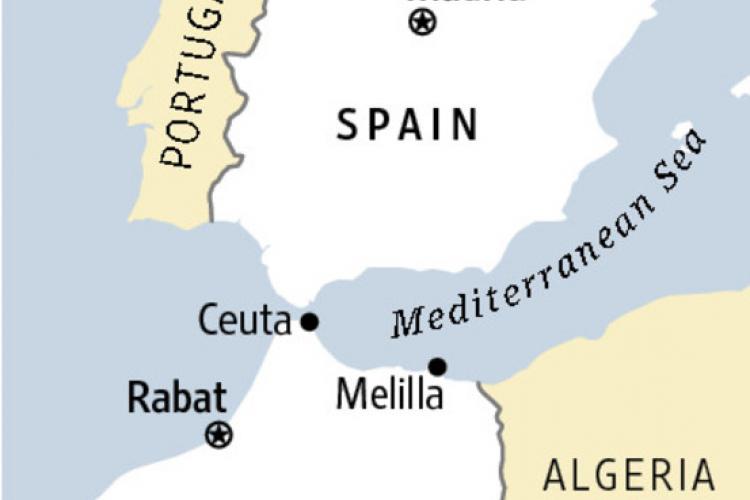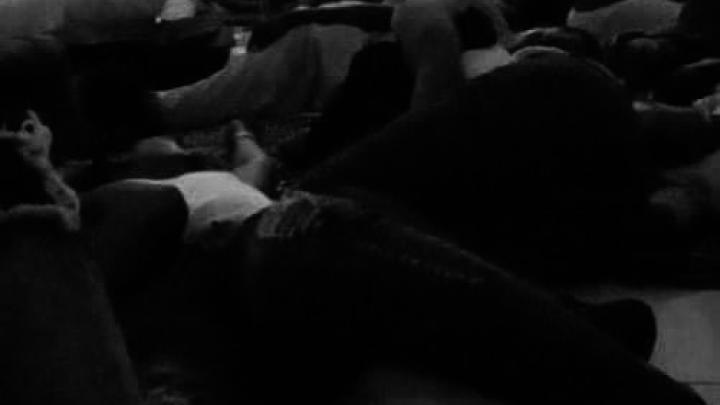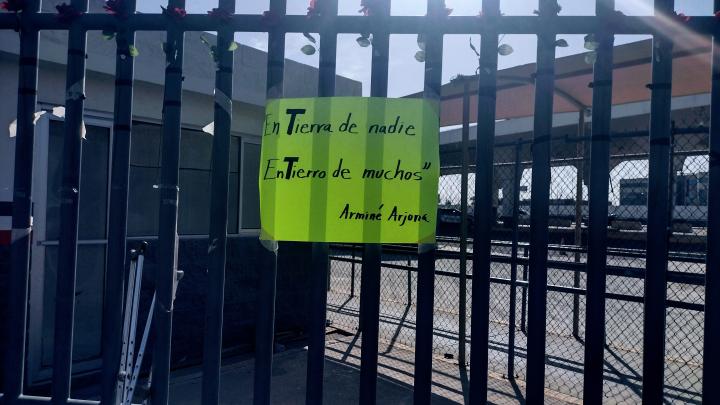On Border Deaths Management and Ungrievability
Posted
Time to read
Guest post by Carolina Kobelinsky. Carolina is an anthropologist and tenured researcher at the French National Centre for Scientific Research (CNRS) and member of the Laboratory of Ethnology and Comparative Sociology (LESC, Nanterre). She is the PI, with Lilyane Rachédi, of the MECMI: Morts en contexte de migration research program. She has co-edited La mort aux frontières de l’Europe : retrouver, identifier, commémorer, signed by the Babels collective in 2017. This is the fifth post of Border Criminologies themed series on 'Deaths at Borders' organised by Marta Esperti and Antoine Pécoud. The series draws upon a special issue of American Behavioral Scientist, coordinated by Marta and Antoine.
In May 2015, a lifeless body was discovered by two young women walking by a cliff, near a lighthouse, in Melilla, a Spanish enclave in North Africa that shares a land border with Morocco and lies at the westernmost point of the Mediterranean Sea. The women called the local police. The following day, the local newspapers reported the death indicating that the body was that of a boy who was an unaccompanied foreign minor.

At the morgue, the forensics team carried out a set of examinations in order to determine the cause of death and, if possible, to identify the body. His fingerprints did not provide a name. This is usually the case with border crossers because, at this point in their journey, they have not yet been registered in any European database. A DNA sample was then collected with the aim of simply storing it as there were no other sample to compare it with. In fact, authorities have no specific protocol for handling border deaths whether at the national or the European level.
A 23-year-old activist working with a local NGO that defends the rights of unaccompanied migrant minors living on the streets received a phone call. Her name was written on a piece of paper that the forensics team found in the dead boy’s pocket. She immediately got to the Guardia Civil Headquarters with another activist, where the officers told them that the boy had most probably fallen off the cliff. This cliff had recently been bordered with new metal fences, which are part of a so-called anti-intrusion fence developed after Spain joined the EU. This wire fence is supposed to prevent youths from jumping covertly onto the ferries or scrap iron boats that could transport them to the Peninsula. This practice, called riski –a word that most probably derives from the French “risquer”, to take a risk– consists in climbing the cliffs and the walls surrounding the coast with the help of ropes so as to get to the promenade that ends at the port without being noticed, and then try to sneak onto the vessels. Riski is very frequent among Moroccan children and young adults. Dozens of youngsters between the ages of 8 and 19, living on the streets of Melilla, put their lives at risk almost every night.
The activists recognized the boy: the dead body was that of Ouacil. Like many other youngsters, Ouacil had arrived in Melilla from Morocco by crossing one of the border posts. They usually arrive very early at the border to cross the first post and then wait in the space separating the Moroccan and Spanish posts. There they are usually in the zone where the women carriers return from Melilla carrying goods and try to sneak in the opposite direction. Once on Spanish land, if the police arrest them, unaccompanied minors are entitled to city guardianship via its Consejería de Bienestar [Well-being Office] and are sent, once their age is determined, to “La Purísima”, a center for minors located in a former military fort. This, however, is a place from which many of the children try to escape because of its humiliating treatment. When he died, Ouacil was living on the streets and had no longer been under the city’s guardianship for six months because the administration considered he had reached the age of 18.
With the help of Hamza, a 15-year-old boy, the activists obtained the contact details of Ouacil’s family in Fez, and provided them to the police. Just afterwards, they decided to organize a gathering by the lighthouse with the youngsters. They took large white sheets and paintings as an invitation to the children to express themselves. “There were more than 50 people, the news spread and the kids kept coming”, explained a boy who had known Ouacil very well. They hung the paintings on the fences and observed a minute of silence.
A week later, Ouacil’s father came from Fez to Melilla with two other relatives. The police were waiting for them at the border post to sort out the red tape around their entry to the city. They were not authorized to remain in Melilla at night –they had to sleep on the other side of the border– and during the day they had to be accompanied by a police officer at all times. The activists tried to introduce themselves to Ouacil’s father and tell him they had started raising money for the repatriation of the remains. However, they were forbidden from approaching him. The burial took place a week later at the Muslim Cemetery. His family was there. I learnt later that they wanted to repatriate the body but could not afford it. The City does not cover such expenses and the family was never aware that funds had been raised for this purpose.
***
Ouacil’s post-mortem itinerary outlined here – pieced together and based on multiple conversations and interviews with the activists and with friends of the deceased – shows the rudimentary nature of border deaths management, a process that depends more on makeshift solutions put together by individuals rather than on any institutionalized protocol aimed at identifying bodies, contacting relatives, and following their wishes concerning the fate of the remains.
Commenting on the death of another boy near the port of the city in March 2016, the head of the Well-being Office stated: “It is not the first time that a minor drowns, and it will not be the last.” Unaccompanied minor migrants in Melilla are clearly not “grievable”, to use philosopher Judith Butler’s terms. Their lives are subjected to a form of perpetual precarity. Alive, border crossers are considered dispensable beings, whose lives are not worth saving nor valuing. Dead, they are still considered and treated as undervalued, marginal individuals, whose very existence is neglected and silenced.
Since his death, from time to time Ouacil “visits” Hamza and other friends in their dreams. It is his way of resisting oblivion and of being grieved.
Any comments about this post? Get in touch with us! Send us an email, or post a comment here or on Facebook. You can also tweet us.
__________
How to cite this blog post (Harvard style)
Kobelinsky, C. (2020). On Border Deaths Management and Ungrievability. Available at: https://www.law.ox.ac.uk/research-subject-groups/centre-criminology/centreborder-criminologies/blog/2020/10/border-deaths [date]
Share
YOU MAY ALSO BE INTERESTED IN
With the support of









